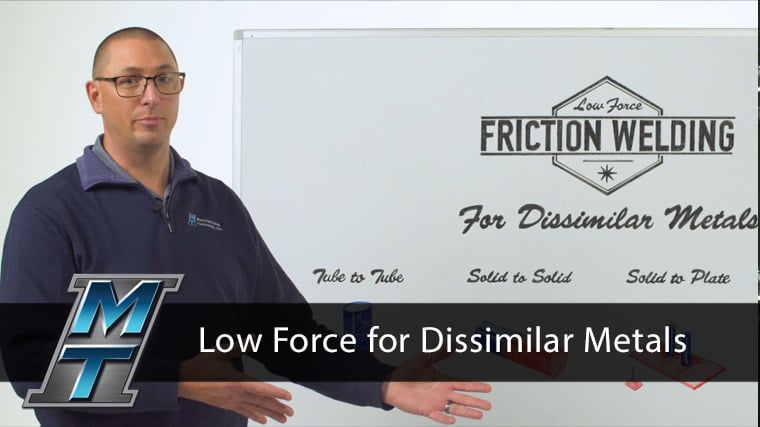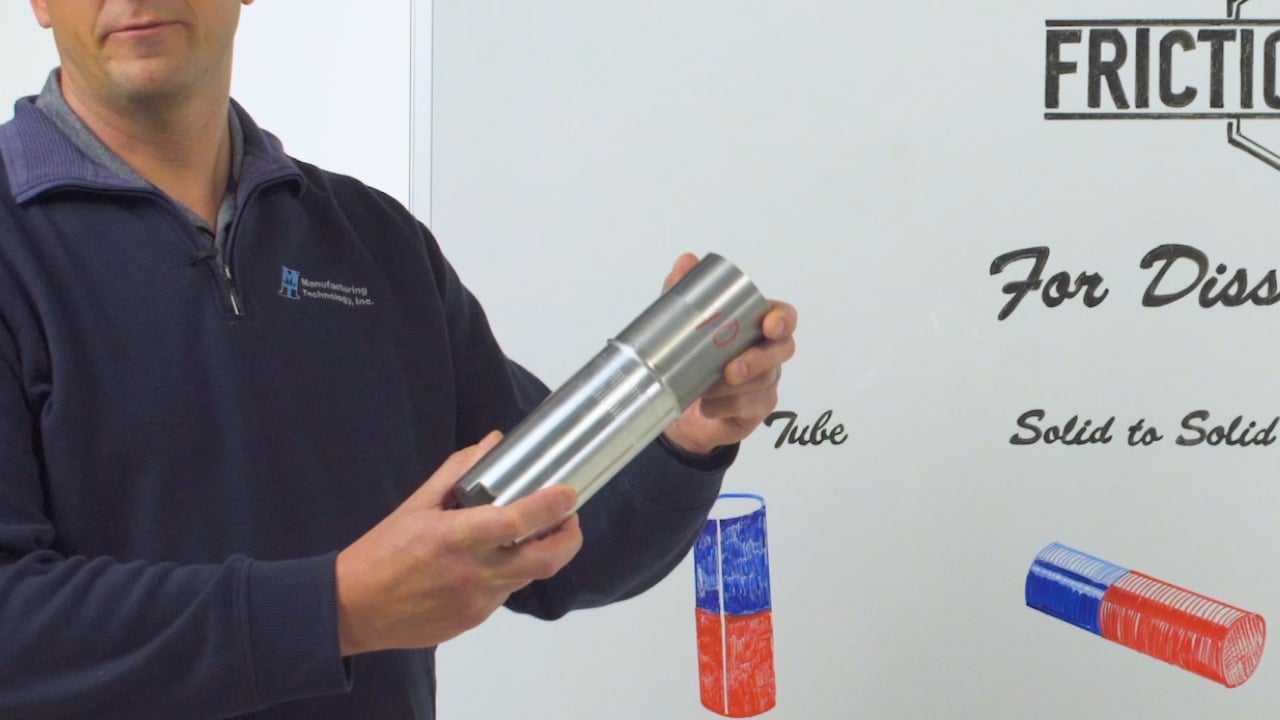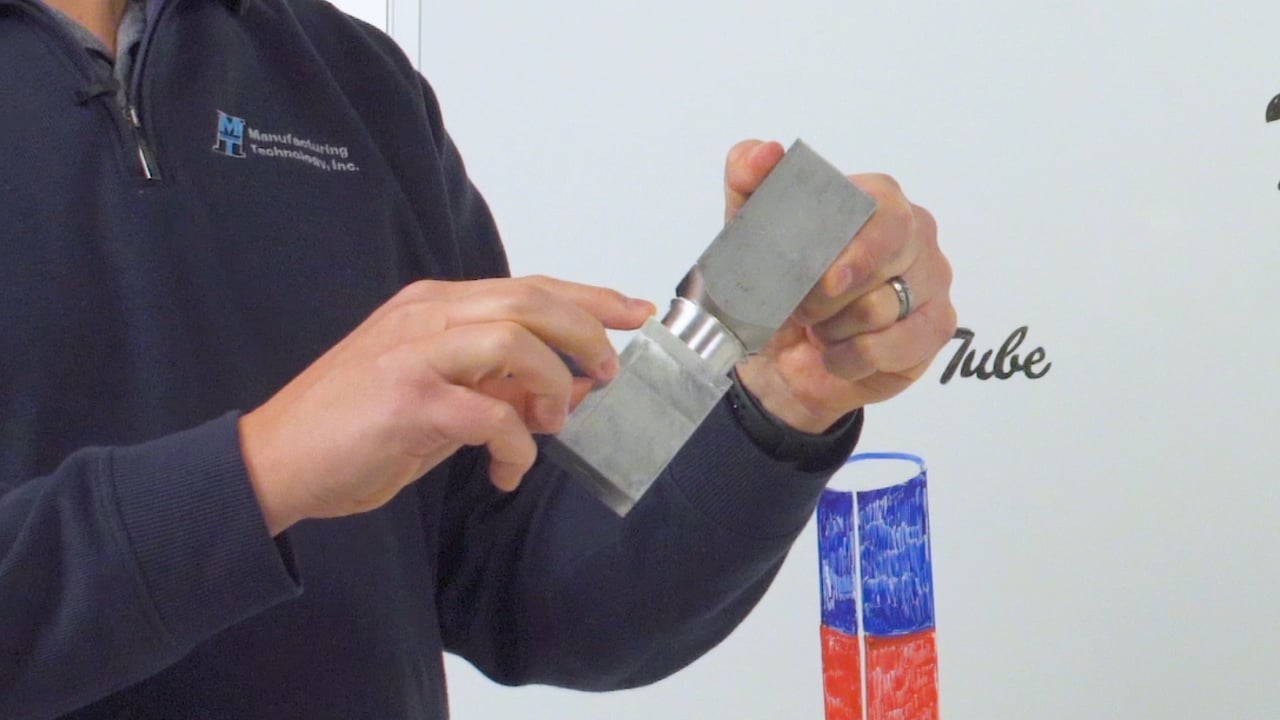
If you've been following along with our Whiteboard Wednesday series, you know that traditional friction welding is a great method for joining dissimilar metals — just about any metal that can be formed can be forged.
So, if you're already successful joining your bimetallics with traditional friction welding, why would you switch to Low Force Friction Welding?
In this episode, we'll explain why Low Force Friction Welding could be a better and more robust option for your dissimilar metal application!
REAPING THE BENEFITS
Switching to Low Force Friction Welding for your bimetallics automatically opens the door to this technology's main benefits such as faster cycle times, low upset, post-weld heat treatment and more.
And now, with Low Force, we have the ability to balance or imbalance the input heat.
AN EASIER WELDING PROCESS
With traditional friction welding, if you wanted to weld a bar to a bar, you would have to rotate one component and apply a forge force against it — that's really the only way you can balance the heat. If you have two components that have drastically different characteristics (such as a bimetallic application), you have to balance that heat toward the component that's more difficult to weld.
That process makes it challenging to complete bimetallic welds with traditional friction welding. While we have certainly found ways to do it, Low Force Friction Welding makes for a much simpler process.
With Low Force Friction Welding, we can imbalance the heat so that we can focus it on the component that is more difficult to weld, therefore we have more customization options to make a Low Force weld while still receiving all of the benefits that this technology provides.
POSSIBLE APPLICATIONS

TUBE TO TUBE: This is an example of an aluminum to steel tube, which simulates a drive shaft.

BAR TO BAR: Low Force Friction Welding can also join solid components — this is another aluminum to steel application. You can see how little flash and upset was generated during the weld - a much different result from what we see with traditional friction welding.

SMALL COMPONENTS: In a previous episode, we talked about the microwelder at EWI. The application first used on that machine was an aluminum stud to an aluminum plate... but it doesn't have to be. It can be Copper to Aluminum or even an EV solution. We also have the ability to put multiple studs on a plate.
The benefit of Low Force here is because the forge force is so low, we can imbalance the heat and make the micro welds without any backside deformation to the very thin plate. Therefore, this is a new application or geometry that cannot be accomplished with traditional friction welding.
A CUSTOMER-TAILORED SOLUTION
To summarize, we can accomplish all the same dissimilar combinations with Low Force Friction Welding, but we are given a few more levers to pull for joint quality. Low Force Friction Welding provides tremendous solid-state joints while also offering all the benefits that makes this technology so attractive.
LET'S GET STARTED
Ready to learn how Low Force Friction Welding can improve your bimetallics? Contact us today to connect with a sales engineer, who will help outline your next steps!
 MTI UK
MTI UK  FWT
FWT